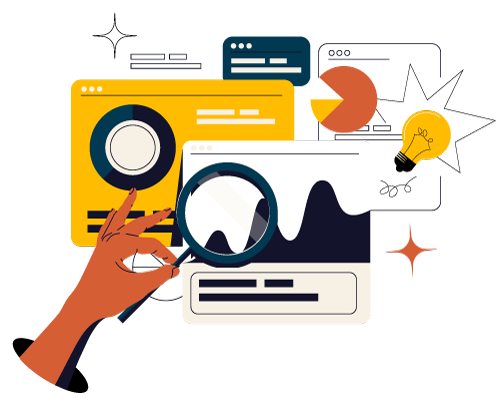How to Write Content That Google Will Love

Follow These Simple SEO Best Practices to Get Your B2B Content to Rank
There is tremendous competition for Google search results, and it’s a never-ending challenge to make sure that your web pages are visible. No B2B marketer enjoys seeing their page in position 50.
This blog post gives you easy guidelines for creating winning content:
- Know what Google likes
- Resolve the content-length dilemma
- Plan the right content
- Keep it fresh (easy hacks!)
- Improve your EAT score
What does Google like? Although Google’s search algorithm is secret, the company has said repeatedly that high quality content and link building are the two most important signals that Google uses to rank websites. To Google, quality means that the people doing the search don’t bounce back to Google, indicating that they found what they were searching for.
And we know that Google likes long content. Consistently, the web pages found in the top position of Google search results have more than 2000 words.
For B2B marketers, this means creating long form content that gives answers to the things prospective customers want to know. Oh, if it was only that simple!
The Content Length Dilemma
Here’s a sobering statistic. People spend only 37 seconds on average reading a web page. This brings us to the content length dilemma.
Visitors are saying, “too-long, I didn’t read,” but Google prefers long text for ranking. What is a marketer supposed to do? Who's going to read 2000 words if they're spending 37 seconds on a page? Well… Google is. Google is going to read all that long form content and index words accordingly.
So, we marketers need long form content. But at the same time, we need visitors to be engaged. We want them moving through that content, getting the information they need, so we increase user engagement… because that sends a signal to Google that the content is valuable.
Here’s how to handle the dilemma. Make the content as engaging and scannable as possible. Put a summary at the top, a “here’s what you will learn.” Try a table of contents with anchor links. Break up the text into small sections. Give readers subheads that let them decide which parts to read. Embed videos, put CTAs along the way, and link to more content. Hopefully, visitors will engage and move down the funnel.
Make your top-of-funnel content answer questions and link to the next piece of content. If we can’t get visitors to stay on a page and read long form content, then create content that's going to rank well and try to move visitors forward with multiple calls to action throughout that content.
For credibility, attach a human to the content. Position individuals as thought leaders. We can't just position the brand. We have to think about individuals within that brand who are going to be our spokespersons. Trust is conferred to a human before a brand.
Make sure that the content is scannable with a summary at the top, and make sure it is readable on a mobile device.
Add images. Blog posts with images are viewed 94% more than those without. By the way, Google image search is its own search engine. If you don’t have an image with your content, it's a missed opportunity for the page to be found.
Content Planning
Content planning should be keyword-driven and goal-driven. Research the keywords where you see opportunities to be visible and write the content with those in mind. (Be careful that you are not being slavish to keywords. People have to value your content or Google will see you’re getting too many bounces.)
One of our clients posted about what it was like to live and work in their area. A nice post, but the page received no visibility. We asked them, what was the goal of the blog post? They said they didn’t have a goal. The writer wasn’t given keywords to target.
In contrast, their technical blog posts are fantastic. They are indexed almost instantly, and they get a lot of traffic because they have topics that people are looking for. What’s more, each page has a goal: to rank for specific keywords selected by the SEO expert.
Speaking of blogs, companies with a blog receive 97% more links to their site. Why do they receive those links? It's because they're creating good content that can be shared. Typically, people are not sharing purchase pages or high-level service pages. They're sharing content that answers a question.
Content Freshness
Now let's talk content freshness. Google had an algorithm update about two years ago concerning content freshness. Google consistently serves up fresher content for certain kinds of searches.
That’s why we tell clients to republish blog posts or change the dates on them.
If someone is researching power supplies, they don't want to see an article from 2017, because new power supplies may have been introduced since then. They will prefer to look at something that's more recent.
This is an easy SEO contact hack. Simply change the title tag to include the year, such as “power supply options 2023.” Even if you just change the date on an old blog post, that can help.
Improve Your EAT Score
In 2022 Google increased its emphasis on EAT. E-A-T stands for expertise, authoritativeness and trustworthiness. Google loves it when you show sources and your sources have value. If you are writing an article about cardiomyopathy, then don't link to some fly-by-night supplement site. Link to Harvard or to WebMD. If a source has real authority, it will help improve your overall EAT score.
It helps to tie the content to a human. Share the author’s thought leadership credentials and where else they were published.
Also, consider author engagement. We've seen evidence that when we create a blog post and it's attached to an actual author not a brand, if that human responds to blog comments, then that increases authoritativeness. A level of trust is conferred because of that engagement, that back and forth.
But Wait, There’s More!
Learn more of our SEO Hacks and how AI is changing SEO. Watch our webinar, “8 SEO Insights For Accelerating B2B Marketing.”
In this webinar you will learn:
- How SEO intersects your whole marketing department
- Hacks for improving rankings and conversions
- How thought leadership affects conversions and Google’s EAT algorithm
- The dilemma of content length
- How to write content that Google sees as authoritative
- The difference between Google featured snippets and passage indexing
- How will Chat GPT affect SEO
- Why low-volume keywords may be your best friends






